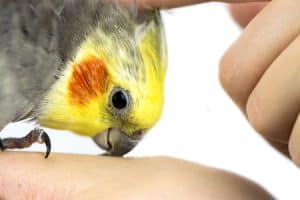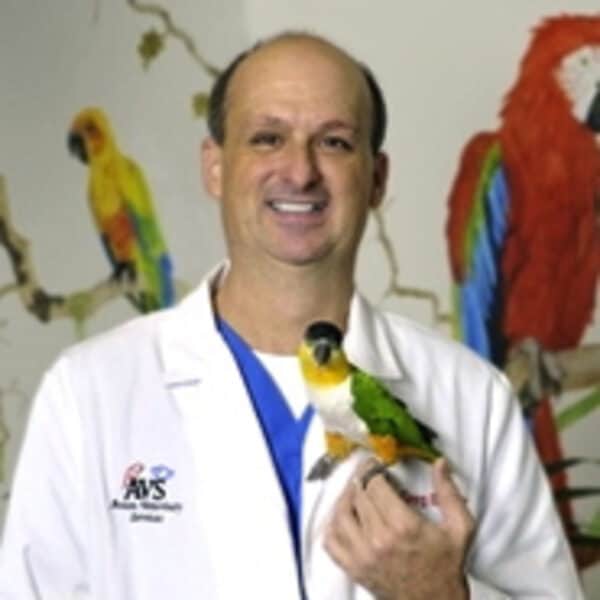
Bird Flight Suit Frequently Asked Questions
Last Updated on by Mitch Rezman
Bird Flight Suit Frequently Asked Questions
What is a FlightSuit?
FlightSuits are cleverly disguised soft, stretchy, reusable pet bird diapers. They allow your feathered friends out of their cages both in and out of the house; worry-free from embarrassing accidents (poop) or dangerous fly-aways.
Easy to put on and take off. Great for travel. Breathable, easy to clean fabric. Use them over and over for years. The patented “poop-pouch” safely keeps droppings away from birds and you.
What is the poop-pouch?
The unique, patented “poop-pouch” is a V-shaped extension at the end of the FlightSuit. It catches the bird waste as it lands, capitalizing on that characteristic of bird poop – it adheres onto whatever it lands on – in this case inexpensive, disposable FlightLiners.
Meanwhile, the upper part of the pouch shields and protects the bird from further contact with the waste. It is a simple concept designed to precise specifications to work properly for each species of bird.
Aren’t FlightSuits just bird diapers?
Yes and no; most “diapers” are disposable while FlightSuits are not! The term “diaper” is often associated with negative connotations: messy, smelly, constricting.
None of these apply to FlightSuits, which are reusable, attractive and sporty. Plus, with the addition of a leash they are much more!
Doesn’t the bird waste touch or stick to the bird?
No! The beauty of FlightSuits and the feature that made them “patentable” is that they safely contain the poop AWAY from the bird! They are guaranteed to work!
How long can birds wear a FlightSuit?
While FlightSuits can be worn for extended periods, we recommend they be changed every 4 to 6 hours.
The unique design of the poop-pouch allows easy monitoring and disposable FlightLiners make using the FlightSuit even easier! Simply change the FlightLiner to extend the time between changing FlightSuits.
Are FlightSuits reusable?
Yes! One of the FlightSuits’ best features is that they are indeed reusable – indefinitely!
Are the FlightSuit leashes safe?
Yes! In fact, if used correctly Avian Fashions’ Leashettes, Lanyards and AnchorLines will make your bird’s time outdoors safer. The following tips may be helpful.
- Make certain that the FlightSuit and leash are securely in place and properly applied.
- When you or your bird sense danger, hold the bird close to your body with one hand on the harness as well as the leash, securing the bird and preventing it from bolting.
- Never leave the bird unattended with the harness and leash on. It is not safe to tie the leash to something and walk away. If you need to set the bird down, try to be quick and hold the end of the leash at all times.
- Do not carry a larger bird on your shoulder while outdoors, you could get a face bite if the bird is startled. Instead, carry the bird securely under the crook of your arm like a purse, or hold it on your hand with your thumbs over the toes to prevent bolting.
- Never jerk the leash. If the bird does bolt, it will go to the end of its leash and then settle to the ground naturally. Don’t pull on the leash unless you know that the bird will land in danger (like into a dog’s mouth!).
- Inspect the leash before each use. Check to see that the snaps are working correctly and that there is no damage that may weaken the leash material.
- Buy a leash color that contrasts with your bird. It is easier to see a red leash on a white bird, allowing you to visually confirm if a snap has come loose.
- Consider using a cat collar around your wrist to secure the handle of the leash and prevent it from slipping off of your hand.
- Holding a bird with your thumb over the toes gives you greater control when you carry the bird and helps to prevent them from bolting from your hand.
- Be careful that you don’t catch the leash on a protruding object.
- If you feed the bird while it is wearing a leash, make certain that there is room for the crop to expand.
How do you condition a bird to wear a FlightSuit?
When introducing your bird to a FlightSuit, it is suggested that bird owners follow these simple steps:
- Allow your bird to see the FlightSuit from a comfortable distance so that it may become accustomed to both the color and fabric. Minimum time: 2 – 3 days.
- Over time, move the FlightSuit closer to the bird and cage. This process will be quicker for younger birds (less than 5 – 6 months old); longer for older birds. Minimum time: 2-3 days.
- Pet or caress the bird with the FlightSuit. Hang the FlightSuit on or near the cage, allowing the bird to examine the suit: Minimum time: 1 – 2 days.
- When you’re both ready to test the FlightSuit, remove the bird’s food for 2 – 3 hours; put FlightSuit on the bird and immediately reward by returning food or feeding. This serves as a positive reinforcement as well as a distraction.
- The following positive reinforcements work well while birds are in FlightSuits:
- Offer plenty of verbal praise.
- Give favorite treats: peas, corn, millet spray.
- Make for quality one-on-one time away from the cage.
- Treat birds to their favorite toy.
- Take birds outside for special outings.
- Birds may nibble at the FlightSuit until they are accustomed to wearing it. To minimize the nibbling, you can use Better Bitterson the FlightSuit.
Author Profile
Latest entries
 The Traveling BirdJune 26, 2025Can You Name 5 Parrot Species That Are Living Wild in the USA?
The Traveling BirdJune 26, 2025Can You Name 5 Parrot Species That Are Living Wild in the USA? Bird BehaviorJune 26, 2025How is it Parrots Are Problem Solvers Social Animals and Even Use Tools?
Bird BehaviorJune 26, 2025How is it Parrots Are Problem Solvers Social Animals and Even Use Tools? Bird & Parrot AnatomyJune 25, 2025How a Tiny Chemical Modification Makes Parrots Nature’s Living Paintings
Bird & Parrot AnatomyJune 25, 2025How a Tiny Chemical Modification Makes Parrots Nature’s Living Paintings PigeonsJune 20, 2025How Do Parrots Thrive in Cities Outside Their Native Habitats?
PigeonsJune 20, 2025How Do Parrots Thrive in Cities Outside Their Native Habitats?


